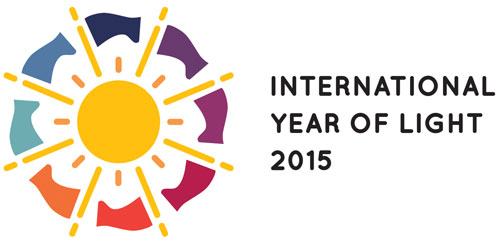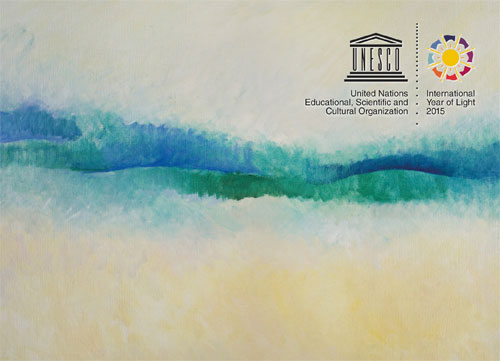
By Luisa Cifarelli
Today sees the official launch of the International Year of Light and Light-based Technologies (IYL 2015) with an opening ceremony at the headquarters of the UN Educational, Scientific and Cultural Organization (UNESCO) in Paris. The idea for IYL 2015 was initiated by the European Physical Society (EPS), of which I was president for two years from 2011 to 2013. The EPS proposal was first officially welcomed – and then endorsed – by UNESCO, with full UN backing coming in December 2013.
It was in 2011, during my time as EPS president, that John Dudley, chair of the quantum electronics and optics division of the EPS, first pointed out to me the importance of a European proposal for an international year dedicated to light. I saw such a year in a sense as a response to LaserFest – a year-long celebration in 2010 of the 50th anniversary of the laser that had been promoted and organized jointly by the American Physical Society, the Optical Society, the International Society for Optics and Photonics, and the IEEE Photonics Society.
What a fascinating topic, I thought, for a worldwide celebration! Light, after all, is not only crucial for all aspects of life, but also throughout science and the arts. What’s more, the technologies based on it have an enormous impact in our civilisation and economy. In September 2011, I therefore formally launched the initiative at an international symposium in the Italian resort of Varenna on Lake Como, which had been jointly organized by the European and Italian physical societies. Entitled Passion for Light, it was attended by eminent scientists as well as representatives of international organizations, including UNESCO itself.
The proposal for IYL 2015 was approved in London in November 2011 by the General Assembly of the International Union of Pure and Applied Physics (IUPAP). After much further behind-the-scenes work, we secured approval from UNESCO’s executive board in Paris in October 2012 with the support of more than 30 nations including Italy. Finally, on 20 December 2013, the official proclamation of IYL 2015 was made at a meeting of the UN general assembly in New York. Further background details of how IYL 2015 came in to being are given in a recent issue of Europhysics News by John Dudley, who succeeded me as EPS president in 2013 and who chairs the IYL international steering committee to which I also belong.
IYL 2015 is a multidisciplinary educational and outreach project with more than 100 partners from over 85 countries. It is a global initiative that will highlight to the citizens of the world the importance of light and optical technologies in their lives, for their futures, and for the development of society. It consists of co-ordinated activities on national, regional and international levels. Activities are planned so that people of all ages, all backgrounds and all countries can enjoy – and appreciate – the central role of light in science and culture. And light will be an inspiring theme, a kind of cultural magic, for all. A full list of activities is available from the official IYL 2015 events calendar.

Inspired by science: Luce d’acqua (Water light) by Giovanna Rasario.
This year also marks a number of different anniversaries related to light and to the achievements of several eminent sceintists. These include the 50th anniversary of the discovery of the cosmic microwave background by Arno Penzias and Robert Wilson, the centenary of Einstein’s general theory of relativity, the 150th anniversary of James Clerk Maxwell’s equations, the 200th anniverary of Augustin-Jean Fresnel’s paper introducing the notion of the wave nature of light – as well as the 1000th anniverary of the work of Ibn-al Haytham, also known as Alhazen. Highlighting all these anniversaries during IYL 2015 will provide valuable educational and historical perspectives, letting us show how scientists from every culture – not only those mentioned here – have contributed to light science over the centuries.
• A special free-to-read digital collection containing 10 of the best light-related features from Physics World magazine is now available
350 YEARS from
1665 – English physicist, Robert Hooke looked at a sliver of cork through a microscope lens and noticed some “pores” or “cells” in it. Using an optical microscope and visible light the term “cell” was coined…a key term for biologists studying the biological cell.
Trackback: Sulla natura della luce. Storia di onde e particelle, dall’universo all’occhio | massacritica